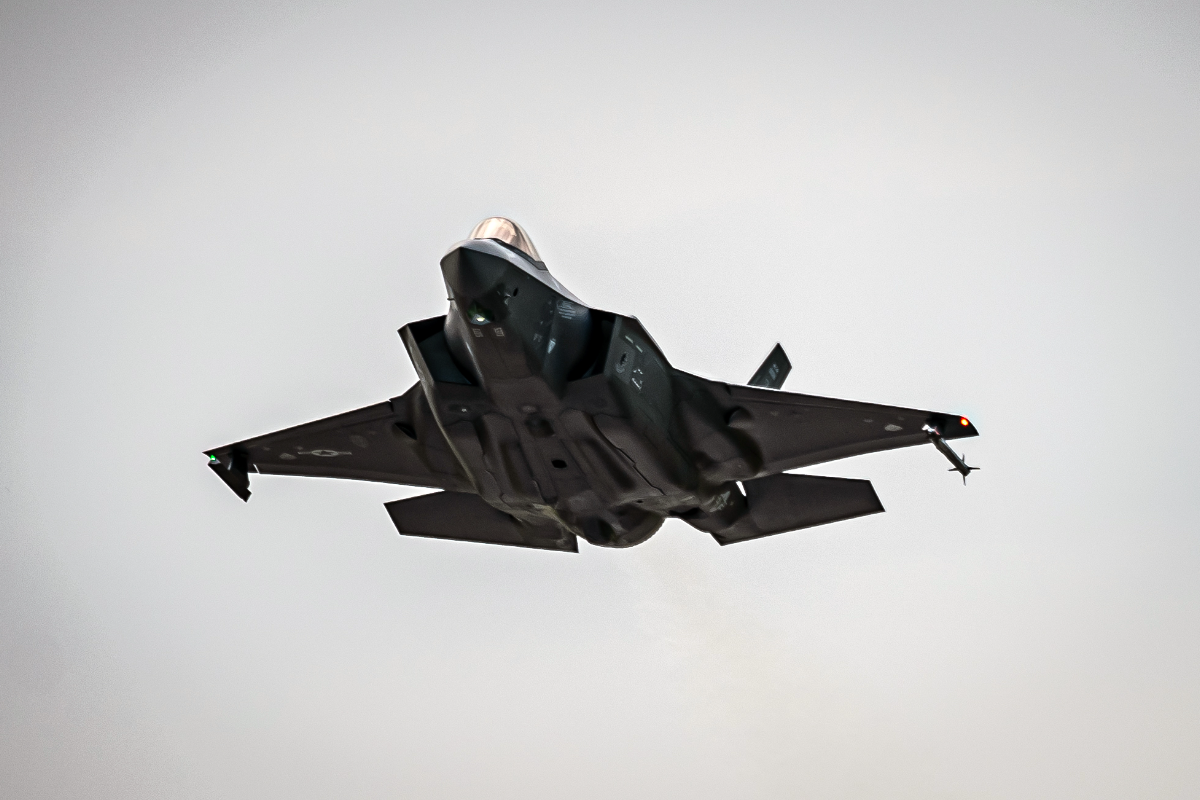Summary Japan plans to double defense spending by 2027 due to increased security threats in the region. Mitsubishi built F-15 Eagles and F-16 Fighting Falcons under license and currently building F-35A under license. Japan is increasing investment in its air force, being the largest F-35 export customer and working on the GCAP Tempest fighter.
While Japan seems only to be actively producing limited quantities of F-35As , it boasts a developed military aviation sector . Japan's defense sector has long only received a small percentage of GDP in funding, as it is the world's third-largest economy that is changing (and is planning to double defense spending by 2027). The emergence of great power competition with China has seen Japan start to invest more in its military (while the US is deploying more advanced F-35As, F-35Cs, and F-15EXs to Japan ).

Previous fighter jets produced under license The backbone of the Japanese combat air force is the F-15 Eagle (Japan is the largest foreign customer of the F-15). These were manufactured under license by Mitsubishi Heavy Industries, Ltd. as the primary contractor (with some modifications).
Some 213 F-15J and F-15DJs were built (the F-15DJ is the conversion trainer variant). The first F-15 was produced by Mitsubishi in 1981. The Mitsubishi F-2 is a licensed copy of the F-16 Fighting Falcon.
Mitsubishi Heavy Industries, Ltd. is the primary contractor, and Lockheed Martin Aeronautics Company, Kawasaki Heavy Industries, Ltd., and SUBARU Corporation (former Fuji Heavy Industries Ltd.
) are subcontractors. The first was delivered in 2000 with a total of 98 F-2s built. Japan's combat fleet (per FlightGlobal ) Quantity: Original aircraft: F-2A: 62 F-16 Fighting Falcon: F-2B: 24 F-16 training variant F-15J: 155 F-15 Eagle F-15DJ: 44 F-15 Eagle training variant F-35A: 36 1 +109 on order While retired now from the Japanese Air Force, Mitsubishi also produced 140 F-4 Phantom IIs under license starting in 1971.
Mitsubishi has also produced Sikorsky UH-60 Black Hawks under license, while Kawasaki has built Boeing CH-47 Chinooks under license. Additionally, Kawasaki developed and produced over 200 Kawasaki T-4 intermediate trainers. China may be able to produce around 240 fighter jets annually made up of J-10s, J-16, and J-20s.
Japan assembling F-35A Joint Strike fighters Japan is currently the largest export partner of the Lockheed Martin F-35 Lightning II fighter jet. Japan is planning to purchase 105 F-35As and up to 42 F-35Bs (a minimum of 127 F-35s, depending on how many F-35Bs are purchased). Japan is home to one of only two F-35 final assembly and check-out facilities outside the United States (located in Nagoya, Japan).
The other final F-35 assembly and check-out is in Italy. This means that Japan can play a large role in building its fleet of F-35A fighters performing the final assembly and check-out of the Japanese F-35A. Japan's F-35s by the numbers: Total F-35As to be procured: 105 Total F-35As received: approx 40 Annual Japanese F-35A production rate: average 5-6 F-35As per year F-35Bs to be procured: up to 42 Total F-35Bs received: 0 Annual Japanese F-35B production rate: 0 (built in USA) While over 1,000 F-35s have already been delivered worldwide , they are only being slowly assembled in Japan.
According to the US Indo-Pacific Command , the first Japanese-built F-35A was delivered to the Japanese Air Force in November 2017 at Misawa Air Base. Defense News reported in May 2024, " Nearly 40 F-35As have been handed over to date, with Japan running its own final assembly and checkout facility. " This suggests an average Japanese F-35A production rate of around 5-6 per year.
The F-35B is the naval STOVL variant designed to operate off small aircraft carriers and amphibious assault ships. Japan operates two Hyūga-class helicopter carriers and two Izumo-class light carriers (although these are all officially designated destroyers). The F-35Bs will operate off the Izumo-class class carriers (and there is potential for them to operate on the Hyūga-class with future modifications).
However, Japanese F-35Bs are not being built in Japan. Instead, they are being built at Lockheed's facility in Fort Worth, Texas. The first Japanese F-35Bs are currently under construction and are expected to be delivered in 2025.
No injuries or damage were reported following emergency landings of two Japanese 5th-gen fighters. Japan builds other non-combat military aircraft Besides upgrading existing fighter jets and assembling the F-35As, Japan does not seem to be building any fighter jets. One notable domestic military aircraft Japan currently produces is the Kawasaki P-1 maritime patrol aircraft.
Kawasaki Aerospace Company developed and manufactured it to replace Japan's aging P-3 Orions. However, it is not a fighter jet and so does not count for the scope of the article. Future sixth-generation fighter Japan is slowly abandoning its pacifist policies.
It has long refused to sell fighter jets to foreign countries and has only built fighter jets for its own use. However, according to the BBC , Japan is abandoning this and plans to export the sixth-generation Global Combat Air Programme (GCAP) "Tempest" fighter jet currently being developed in cooperation with the United Kingdom and Italy. Japan's upcoming Global Combat Air Programme (GCAP) "Tempest" Planned introduction date: 2035 Prime Japanese contractor: Mitsubishi Heavy Industries Japanese name: Mitsubishi F-X Expected quantity: unknown (likely relatively low numbers) First flight: Expected 2028 If GCAP isn't canceled along the way and gets developed, it is expected to enter service by around 2035.
While the workload is shared between the three countries—the UK, Italy, and Japan—it is unclear just how much of the aircraft each country will eventually manufacture and assemble and whether it will have multiple assembly plants. It is unknown how many manned GACP fighters Japan is planning to produce, but as with other air forces, the sixth-generation manned fighters are expected to be procured in low numbers..



















